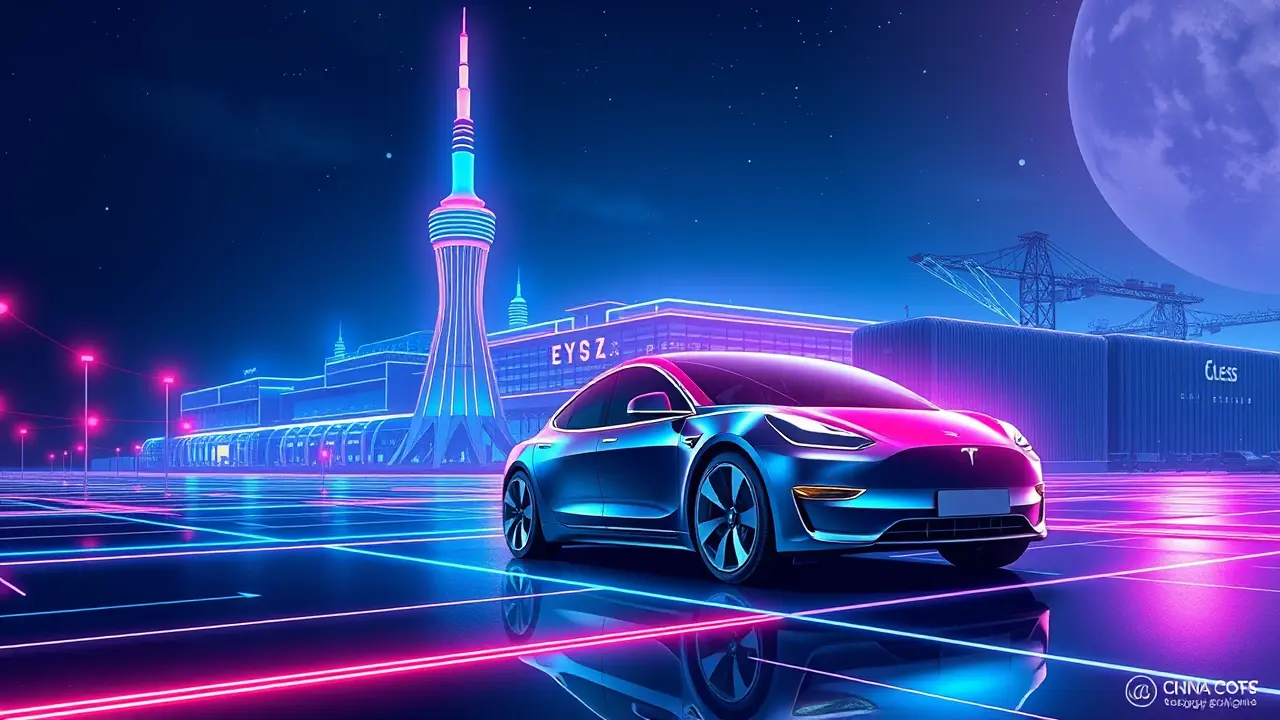Tesla Shanghai Factory Sets Monthly Delivery Record
Tesla’s Shanghai Gigafactory has just fired a spectacular salvo in the global automotive arena, achieving a monumental monthly delivery record that sends a clear signal about the future of transportation. In September, the sprawling assembly complex in the Lingang free-trade zone, a technological peninsula intrinsically linked to the colossal Yangshan Deep-water Port, delivered an astounding 90,812 vehicles to customers.This figure isn't just a new annual high; it's a cosmic leap, a 2. 8 per cent increase from the same period, demonstrating a powerful gravitational pull from China's affluent consumer base who are increasingly drawn to the spacious, upgraded models rolling off Tesla's production lines.Think of this facility not as a mere factory, but as a launchpad, a terrestrial starship dock where the vision of a sustainable, electric future is being manufactured at a scale and speed that rivals the most ambitious space programs. The China Passenger Car Association (CPCA) data confirms what industry observers have long suspected: Tesla's localized strategy in China is achieving escape velocity.To understand the magnitude of this achievement, one must look at the cosmic context. This record was set against a backdrop of intense domestic competition from rivals like BYD and Nio, who are also vying for dominance in the world's largest EV market.The success of the upgraded Model 3 and Model Y can be likened to a perfectly executed orbital insertion burn; they hit the market with precise timing and features that resonated deeply with a demographic valuing both technological prestige and practical interior space. The Gigafactory Shanghai itself is a marvel of modern logistics, a node in a global supply chain as complex as the orbital mechanics required for an interplanetary mission.Its location is no accident—the proximity to a deep-water port allows for the efficient import of components and the export of finished vehicles, creating a virtuous cycle of production and distribution that Elon Musk’s other company, SpaceX, would admire for its efficiency. This isn't just about selling cars; it's about proving that a vertically integrated, technologically audacious vision can thrive within the intricate ecosystem of the Chinese economy.The broader implications are stellar. This production surge solidifies China's role not just as a massive consumer market, but as the central manufacturing hub for Tesla's global ambitions, potentially supplying key markets across Europe and Asia-Pacific.It puts immense pressure on legacy automakers who are still calibrating their own electric transitions, forcing them to accelerate their timelines or risk being left in the atmospheric dust. Furthermore, it raises fascinating questions about the geopolitics of technology and energy, as the world's two largest economies become increasingly intertwined through ventures like this.As we gaze at the data from the CPCA, we're not just looking at sales figures; we're witnessing a fundamental shift in the industrial landscape, a testament to human ingenuity and a preview of a future where our highways might one day resemble the clean, silent, and efficient transport lanes we imagine on Mars. The Shanghai Gigafactory’s record is more than a quarterly report—it’s a beacon, illuminating the path forward for the entire automotive industry.
It’s quiet here...Start the conversation by leaving the first comment.
© 2025 Outpoll Service LTD. All rights reserved.
